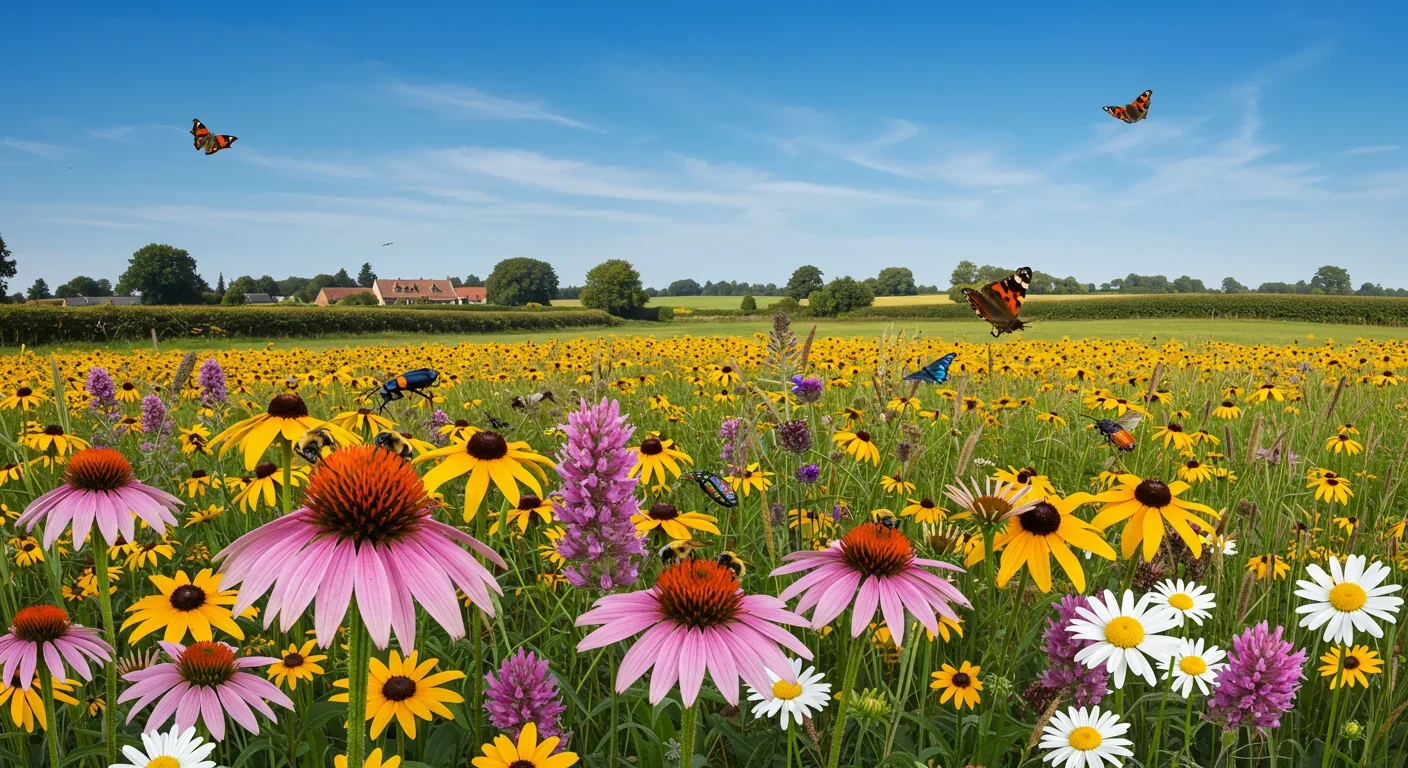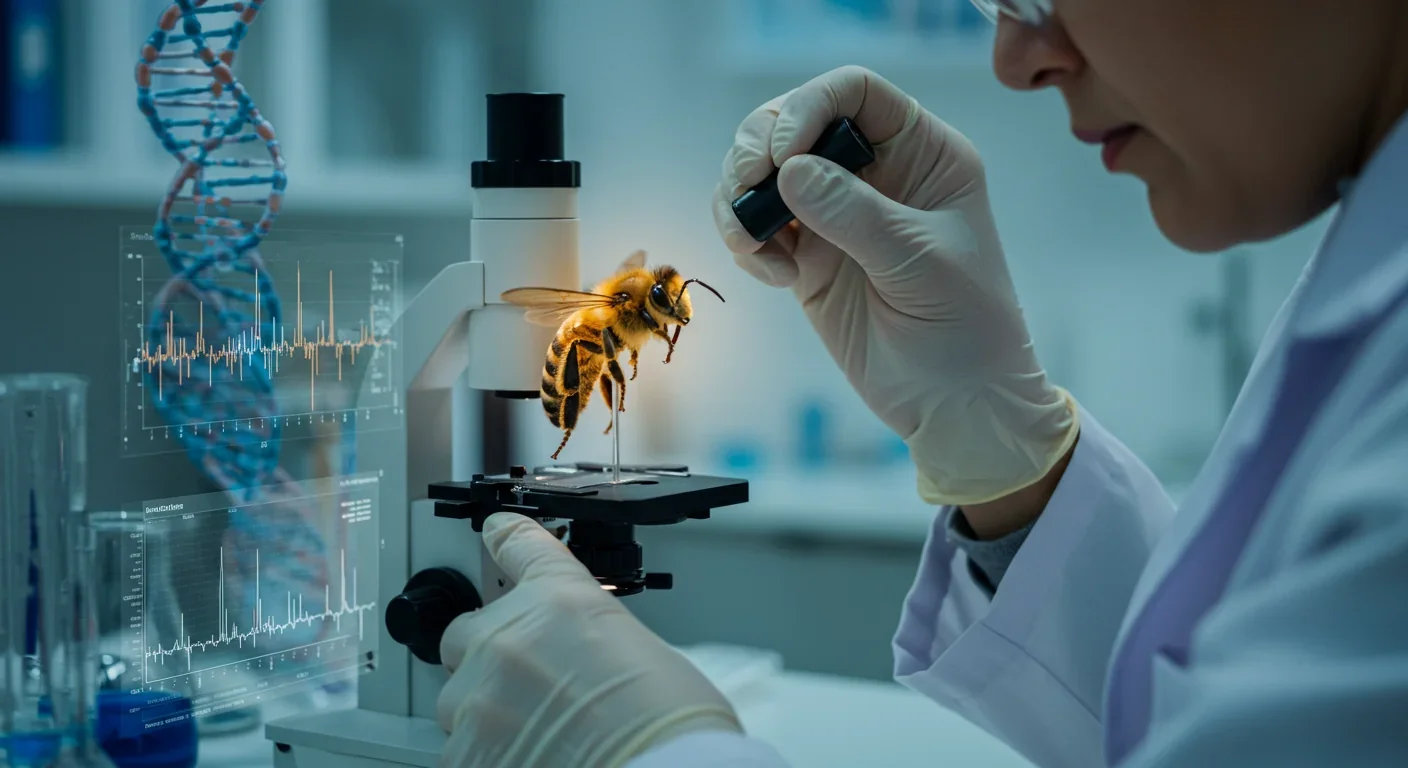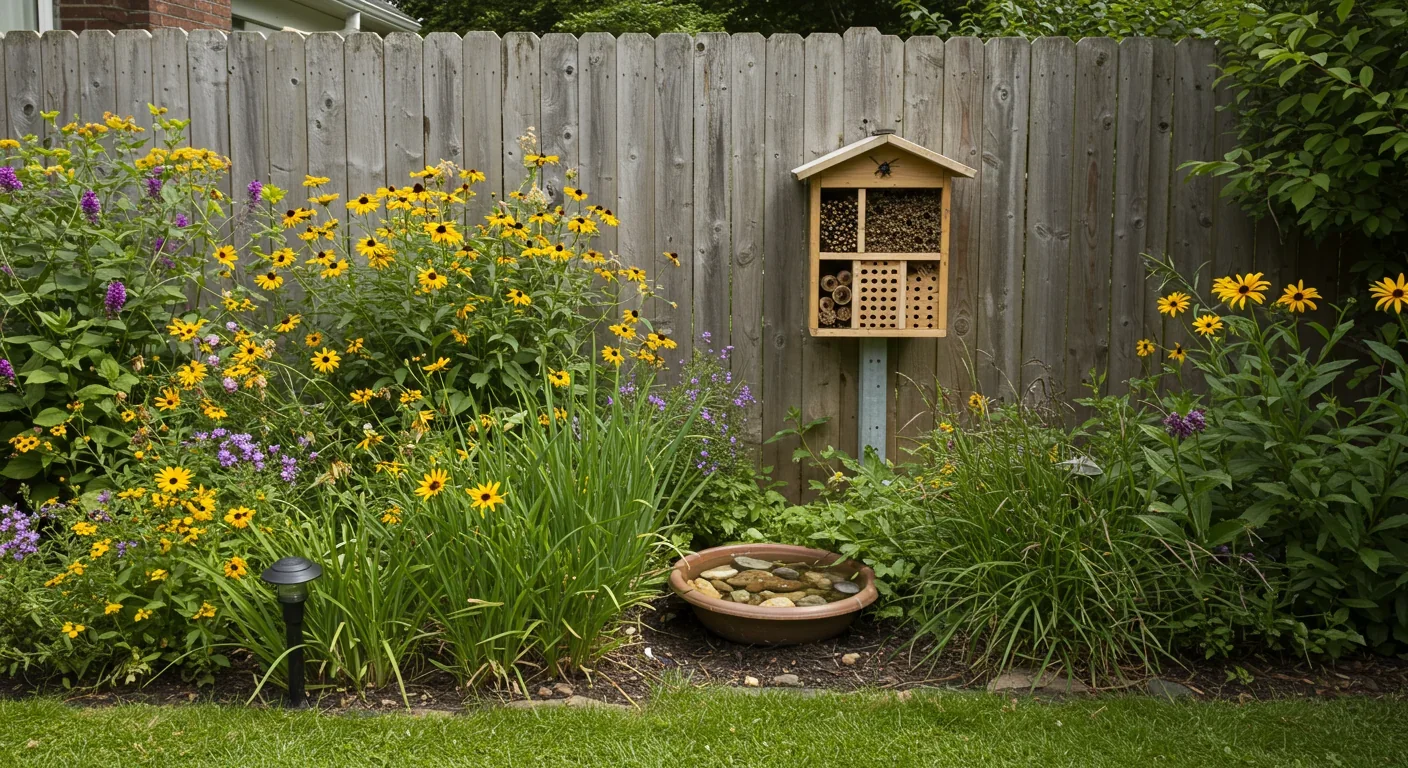Bombardier Beetle Chemical Defense: Nature's Micro Engine

TL;DR: Insect populations are collapsing worldwide due to pesticides, habitat loss, climate change, and invasive species, threatening food security and ecosystems. But solutions exist: policy reforms, habitat restoration, regenerative agriculture, and individual actions can reverse the trend if we act now.

By 2050, scientists predict that up to 40% of insect species could face extinction. But this isn't some distant ecological catastrophe playing out in rainforests we'll never visit. Right now, in Fiji's remote tropical islands and Pennsylvania's suburban backyards alike, insects are vanishing at rates that should terrify anyone who eats food. A groundbreaking study just proved what ecologists have feared: even in pristine wilderness areas untouched by pesticides or development, insect populations are collapsing. The culprit? Climate change alone is powerful enough to trigger an apocalypse.
For years, the insect apocalypse remained controversial because most decline data came from agricultural regions where pesticides and habitat loss confounded the results. Scientists couldn't separate correlation from causation. That uncertainty just evaporated.
Researchers analyzing Fiji's endemic ant populations using museum specimens and genomic sequencing discovered something stunning: 79% of ant species were in decline. The decline began 3,000 years ago when humans first arrived but accelerated dramatically in the past 300 years, coinciding with European contact, global trade, and modern agriculture. What makes this finding revolutionary is the method. By examining DNA sequence variations among thousands of specimens, researchers could infer population trends without decades of field observations.
Meanwhile, U.S. beekeepers lost 48% of managed colonies between 2022 and 2023 alone. That's not a gradual slide toward trouble. That's freefall.
Even more disturbing: a new study found insect populations dropping in remote, human-free environments where there are no pesticides, no agricultural runoff, no habitat destruction. Climate variables alone were enough to predict significant declines. This means that even if we solved every other problem tomorrow, rising temperatures and shifting precipitation patterns would continue driving insects toward extinction.
The insect apocalypse doesn't have a single villain. It has four horsemen: pesticides, habitat loss, climate change, and invasive species. Each amplifies the others.
Pesticides turned landscapes into chemical minefields. The PoshBee study examined 128 agricultural landscapes across eight European countries and found bumblebee colonies exposed to an average of eight different pesticides, with some colonies contaminated by up to 27 compounds. Worse, they detected imidacloprid, a banned neonicotinoid, in 8% of samples. Bans don't work when chemicals persist in soil and water for years.
Neonicotinoids are particularly insidious because they don't just kill adult insects outright. They target the central nervous system at sublethal levels, disrupting behavior and reproduction. Research on acetamiprid's impact on honeybees revealed that exposure alters the fatty acid composition in bee brains, potentially impairing navigation and foraging. Queens and drones exposed during larval development produce fewer viable offspring, compromising the genetic diversity and resilience of entire colonies.

Habitat loss is the knockout punch. As Dr. Jessica Knapp notes in her PoshBee research, habitat destruction is "the most severe stressor overall" for pollinators. Without suitable habitat, populations cannot sustain themselves no matter how many other problems we fix. Monoculture farming eliminated the wildflower meadows, hedgerows, and diverse landscapes insects evolved alongside. What used to be a rich mosaic of plant species providing food throughout the seasons became an endless expanse of corn or soybeans, offering nothing for pollinators except during a brief flowering window.
The PoshBee study found something hopeful buried in the grim data: bumblebee colonies in landscapes with more semi-natural grasslands and less cropland grew better, even when exposed to the same pesticide loads. Semi-natural habitats buffer pesticide exposure, providing refuges where insects can recover and diversify their diet, reducing reliance on contaminated crops.
Climate change rewrites the rules insects evolved by. Temperature shifts disrupt synchronized relationships between insects and the plants they pollinate. Warmer springs trigger earlier flowering, but if pollinators emerge on their historical schedule, they miss the bloom. Extreme weather events, more frequent droughts, and unpredictable precipitation create cascading failures through food webs. The remote wilderness study showed that climate metrics like temperature and precipitation alone strongly correlated with insect decline, independent of human land use.
Invasive species deliver the final blow. Non-native predators, parasites, and competitors arrived through global trade, often without the natural enemies that kept them in check back home. They prey on native insects, outcompete them for resources, and introduce diseases. On isolated islands like Fiji, endemic species that evolved in the absence of certain predators are particularly vulnerable.
Then there's a threat most people never consider: light pollution. Fireflies are vanishing from Pennsylvania not because of pesticides or habitat loss, but because LED streetlights drown out their bioluminescent mating signals. Urban lighting disrupts countless nocturnal insects that rely on darkness for navigation, feeding, and reproduction.
Pollinator-dependent crops contribute an estimated $235 to $577 billion annually to the global economy. More than 90 commercial crops in the U.S. rely on pollination. About one-third of the food we eat depends on insect pollinators. Without bees, U.S. grocery stores would lose 70% of their produce variety, according to the American Beekeeping Federation.
But focusing only on pollination misses the broader ecological catastrophe. Insects are the foundation of most terrestrial food webs. They decompose organic matter, cycle nutrients, control pest populations, and feed birds, reptiles, amphibians, fish, and mammals. When insect populations collapse, everything above them in the food chain follows.
Bird populations are already in freefall, partly because their insect prey disappeared. Freshwater fish that depend on aquatic insects for food are declining. Amphibians, already hammered by habitat loss and disease, lose a critical food source. Even large predators feel the impact as prey populations dwindle.
This isn't just an environmental crisis. It's a business continuity crisis. Agricultural supply chains face disruption, input costs are rising, and companies with ESG commitments face reputational risk if their operations contribute to pollinator decline. Pollinator health is rapidly becoming a material risk factor for businesses dependent on agriculture.
The insect apocalypse is real, but it's not inevitable. We have the tools to reverse the trend, and some are already working.
Regulatory action is starting to move. The UK government updated its emergency authorization guidance to tighten restrictions on bee-harming pesticides, prioritizing Integrated Pest Management strategies over chemical applications. Colorado restricted neonicotinoid pesticides for home and garden use, recognizing that residential pesticide use contributes significantly to pollinator exposure. These policies signal a shift from blanket pesticide reliance toward more nuanced, evidence-based approaches.

The PoshBee research offers a critical insight for regulators: using a single sentinel species like Bombus terrestris (the buff-tailed bumblebee) can reliably predict pesticide risk across diverse pollinator communities. This discovery simplifies monitoring and regulatory assessment, making it feasible to track pollinator health without prohibitively expensive multi-species studies.
Landscape-scale habitat restoration works. Insect corridors are proving remarkably effective at reversing population declines. These corridors, strips of native wildflowers and grasses planted along roadsides, field margins, and urban green spaces, create networks of habitat that allow insects to move, feed, and reproduce across fragmented landscapes. In Tallinn, Estonia, a "Pollinator Highway" project transformed urban medians into thriving insect habitat. Bonus: these corridors also support insectivorous birds, linking insect and bird conservation.
Regenerative agriculture practices are gaining traction. By integrating cover crops, reduced tillage, diverse crop rotations, and minimized chemical inputs, these systems rebuild soil health while providing year-round habitat and food for beneficial insects. The Rainforest Alliance's regenerative agriculture standard demonstrates that these practices can scale, delivering measurable environmental benefits without sacrificing productivity.
Businesses are embedding pollinator health into strategy. Forward-thinking companies now incorporate pollinator risk into enterprise risk management, embed pollinator-friendly criteria in procurement decisions, and invest in habitat restoration on corporate lands. This isn't altruism. It's recognition that supply chain resilience depends on functional ecosystems. Companies that ignore pollinator decline will face higher costs, supply disruptions, and consumer backlash.
Individual actions add up. You don't need a farm to make a difference. Planting native flowers in your yard or balcony provides critical forage. Avoiding pesticides, even on ornamental plants, eliminates a source of contamination. Leaving patches of bare ground for ground-nesting bees and dead wood for cavity-nesters creates nesting habitat. Reducing outdoor lighting, or switching to amber LEDs that minimize blue wavelengths, helps nocturnal insects navigate. Supporting organic farming through purchasing decisions signals market demand for pollinator-friendly practices.
Plant native flowers that bloom sequentially from early spring through fall, providing continuous forage. Native plants support 4 to 50 times more native bee species than non-native ornamentals.
Stop using pesticides in your yard and garden. Most pest problems can be managed through Integrated Pest Management techniques: encouraging beneficial predators, using physical barriers, applying targeted organic treatments only when necessary, and accepting some level of plant damage as normal.
Create nesting habitat. Leave areas of bare, undisturbed soil for ground-nesting bees (about 70% of native bee species nest in the ground). Provide bundles of hollow stems or purchase bee hotels for cavity-nesters. Leave dead wood and leaf litter, which countless insects depend on.
Reduce light pollution. Turn off outdoor lights when not needed. Use motion sensors and timers. Choose fixtures that direct light downward rather than broadcasting it skyward. Switch to amber or red LEDs that are less disruptive to insect navigation.
Support policy changes. Contact representatives to support pesticide restrictions, habitat restoration funding, and agricultural policies that incentivize regenerative practices. Vote with your wallet by prioritizing organic, regeneratively grown food.
Spread awareness. Most people have no idea this crisis is happening. Share information, talk to neighbors, organize community planting events. The more people understand what's at stake, the more pressure builds for systemic change.
What makes the insect apocalypse different from many environmental challenges is that the solutions are known, tested, and scalable. We're not waiting for some technological breakthrough. We need political will, economic investment, and collective action.
Remote islands like Fiji offer both a warning and a research opportunity. Their isolation makes them sensitive indicators of global trends, and genomic methods applied to museum specimens can reconstruct population histories spanning centuries. Expanding this approach worldwide would give us an unprecedented view of biodiversity change, helping us target conservation efforts where they'll have the greatest impact.
The integration of ecological research into business strategy marks a crucial evolution in how we approach conservation. When pollinator health becomes a boardroom concern, corporations deploy resources at scales environmental organizations can only dream of. Embedding environmental metrics into financial risk assessments transforms conservation from a charitable afterthought into a fiduciary responsibility.
The choice before us is stark. We can continue on our current trajectory, watching insect populations spiral toward extinction and dealing with the cascading agricultural and ecological failures that follow. Or we can recognize that protecting insects is protecting ourselves—our food security, economic stability, and the living systems that make Earth habitable.
The evidence is clear. The consequences are catastrophic. The solutions exist. What we do next determines whether future generations inherit a world still buzzing with life or a silent, impoverished shadow of what we had.
The insect apocalypse isn't coming. It's here. But unlike many crises, this one still has an off-ramp. We just have to take it.

Recent breakthroughs in fusion technology—including 351,000-gauss magnetic fields, AI-driven plasma diagnostics, and net energy gain at the National Ignition Facility—are transforming fusion propulsion from science fiction to engineering frontier. Scientists now have a realistic pathway to accelerate spacecraft to 10% of light speed, enabling a 43-year journey to Alpha Centauri. While challenges remain in miniaturization, neutron management, and sustained operation, the physics barriers have ...

Epigenetic clocks measure DNA methylation patterns to calculate biological age, which predicts disease risk up to 30 years before symptoms appear. Landmark studies show that accelerated epigenetic aging forecasts cardiovascular disease, diabetes, and neurodegeneration with remarkable accuracy. Lifestyle interventions—Mediterranean diet, structured exercise, quality sleep, stress management—can measurably reverse biological aging, reducing epigenetic age by 1-2 years within months. Commercial ...

Data centers consumed 415 terawatt-hours of electricity in 2024 and will nearly double that by 2030, driven by AI's insatiable energy appetite. Despite tech giants' renewable pledges, actual emissions are up to 662% higher than reported due to accounting loopholes. A digital pollution tax—similar to Europe's carbon border tariff—could finally force the industry to invest in efficiency technologies like liquid cooling, waste heat recovery, and time-matched renewable power, transforming volunta...

Humans are hardwired to see invisible agents—gods, ghosts, conspiracies—thanks to the Hyperactive Agency Detection Device (HADD), an evolutionary survival mechanism that favored false alarms over fatal misses. This cognitive bias, rooted in brain regions like the temporoparietal junction and medial prefrontal cortex, generates religious beliefs, animistic worldviews, and conspiracy theories across all cultures. Understanding HADD doesn't eliminate belief, but it helps us recognize when our pa...

The bombardier beetle has perfected a chemical defense system that human engineers are still trying to replicate: a two-chamber micro-combustion engine that mixes hydroquinone and hydrogen peroxide to create explosive 100°C sprays at up to 500 pulses per second, aimed with 270-degree precision. This tiny insect's biochemical marvel is inspiring revolutionary technologies in aerospace propulsion, pharmaceutical delivery, and fire suppression. By 2030, beetle-inspired systems could position sat...

The U.S. faces a catastrophic care worker shortage driven by poverty-level wages, overwhelming burnout, and systemic undervaluation. With 99% of nursing homes hiring and 9.7 million openings projected by 2034, the crisis threatens patient safety, family stability, and economic productivity. Evidence-based solutions—wage reforms, streamlined training, technology integration, and policy enforcement—exist and work, but require sustained political will and cultural recognition that caregiving is ...

Every major AI model was trained on copyrighted text scraped without permission, triggering billion-dollar lawsuits and forcing a reckoning between innovation and creator rights. The future depends on finding balance between transformative AI development and fair compensation for the people whose work fuels it.